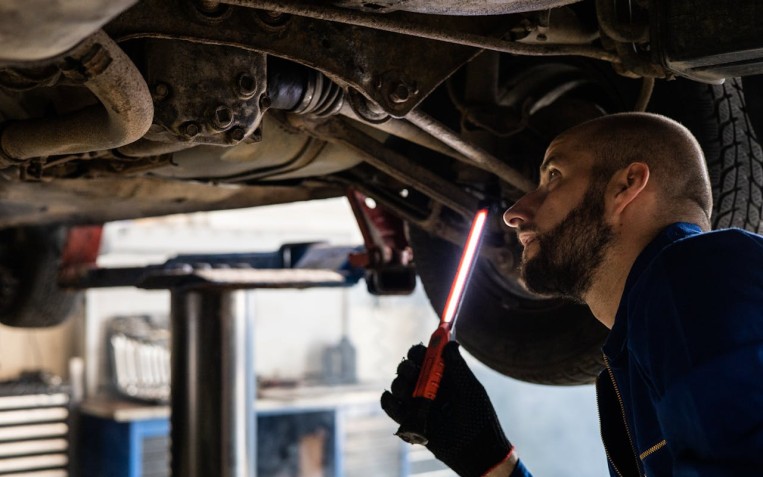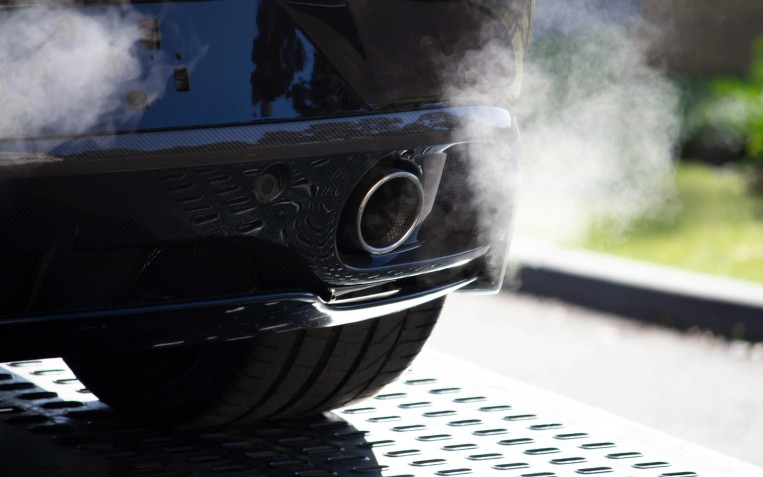What can fail an MOT?

MOTs ensure your car is safe to drive on the road. Failing your MOT can not only be frustrating, but it can also end up quite expensive. Surprisingly, the reason why many cars fail their MOT is for simple issues that can be easily fixed. In this informative guide, not only do we outline the most common MOT fails, but we also provide top tips on how to avoid them.
What fails an MOT
1. Tyres
Rogue potholes and rough roads can really make their mark on your tyres, which is why it’s important to get them checked often. The legal requirement for tyre tread is 1.6mm, as anything below this is an automatic MOT fail. In fact, you can check your tyre tread with just a 20p coin! All you have to do is insert the coin into the ridges of your tyre – if you cannot see the outer band of the coin, your tyres are fine. However, if you can see the outer band, then your tyres need replacing immediately.
2. Lights
GOV.UK reports that 30% of MOT faults are related to car lighting and signalling. These issues could be as minor as a blown lightbulb or something so easily overlooked, such as your number plate light. This issue could also stem from a problem you are unaware of, such as the brake lights – be sure to get someone to stand outside of your car, to check the lights are working when you activate the brake pedals.
3. Mirrors, wipers and washers
These features of your car can fail your MOT as it hinders the ‘drivers view of the road’. In fact, 7.2% of MOT failures are due to this! To ensure this doesn’t let you down, be sure to check your windscreen and mirrors for cracks or chips.
4.Brakes
1 out of 10 MOT issues are caused by brakes. This is a very important feature, so it’s recommended that you test your brakes each day. Make sure to keep your brakes healthy by topping up on brake fluid; listen out for screeching noises; and make sure to pay attention to the thickness of your brake pads. Sometimes, your handbrake can also get neglected – you can test this by parking on a small hill and checking if the handbrake stops the car. If not, this suggests your brakes may need modifying.
5. Suspension
Suspension issues are often quite difficult to spot, which is why they are a common MOT failure. Issues with the suspension of your vehicle is usually present in various ways - listen out for unusual clunky sounds from your car. You can physically test the suspension by taking a look at the car corners, assessing if any corners look too high or too low. You should then push down on each corner of the car, and if it springs back up , then your suspension is working correctly. However, if your car bounces a few times before coming back up, this is an indicator of a suspension issue.
6. Seatbelts
This one is seemingly simple, however, if one of your seatbelts is cut or frayed, this is an immediate failure for your MOT. So, ensuring you complete those extra checks on your seatbelt before the annual MOT test, could save you both time and money!
7. Airbags
This feature of your car may evade your mind, as you do not see your airbags everyday – however, they are tested in the MOT. Most cars come with an airbag diagnostic test feature, which means you can double check your airbags just before your car gets the once over.
Next MOT, be sure to double check these features so you can save time and money. In the case that your car has not passed its MOT check, then there is no need to worry at all, as you can consult our helpful guide to figure out the next steps. If you need your car servicing, be sure to check out one of our branches near you.
Related Content

What is the difference between Class 4 and Class 7 MOTs?
A Class 4 MOT test is required for passenger vehicles that weigh less than 3,000 kilograms. Class 4 MOT tests, cover a wide range of vehicles, including: Cars (with up to eight passenger seats) Ambulances Taxis Mot...

Why do MOT tests include an exhaust emissions test
In 2023, 3.2% of all MOTs failed due to noise, emissions and leaks according to data from the DVLA. MOT tests include emissions tests to prevent a hig...

Do EVs need an MOT?
One of the benefits of making the switch to an electric vehicle is the many money saving incentives like not having to pay road tax, or for your car t...

